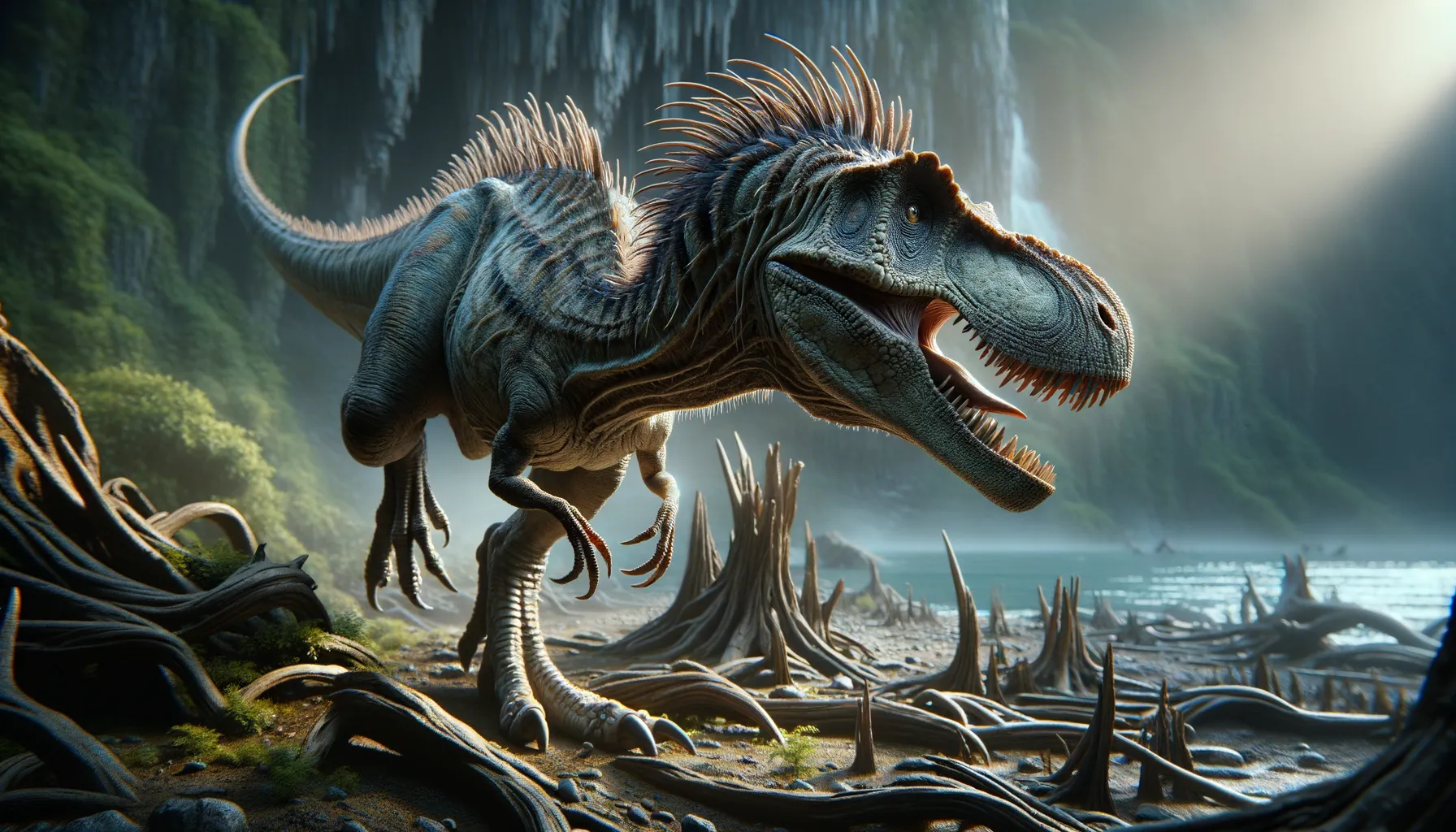
Nanotyrannus
Swift predator of smaller prey.
Period
Cretaceous
Length
Measured about 17 feet long.
Height
Stood approximately 6 feet tall.
Weight
Estimated around 1,100 pounds.
This dinosaur is a subject of debate among paleontologists with its classification disputed between being a distinct species or a juvenile Tyrannosaurus rex. Known for its comparatively small size, it showcases features that suggest it was a nimble predator. New fossil finds continually influence the understanding of its role in the late Cretaceous ecosystem.
Diet
Primarily carnivorous, it likely fed on smaller dinosaurs and carrion. Its diet depended on available prey in its environment, suggesting opportunistic feeding habits.
Hunting
With sharp teeth and a more agile frame, it could have been adept at hunting smaller prey. The exact nature of its hunting strategies remains under investigation due to scarce fossil evidence.
Environmental challenges
Living during the late Cretaceous, this dinosaur faced various environmental shifts. Climate changes could lead to variations in prey availability and competition with other carnivores. Adaptability in hunting and diet would have been crucial for survival in such dynamic ecosystems.
Speed
Relatively quick predator for its size.
Lifespan
Likely lived up to 20-30 years.
First discovery
Discovered in 1942 by Charles W. Gilmore.
Fun Facts
- Nanotyrannus is believed to be a small cousin of the famous Tyrannosaurus rex, often thought of as a 'mini T. rex.'
- There is a debate among scientists about whether Nanotyrannus is a distinct dinosaur or just a juvenile T. rex.
- Fossils of Nanotyrannus have been found primarily in North America, particularly in Montana.
- The name Nanotyrannus means 'dwarf tyrant,' which reflects its smaller size compared to T. rex.
- Due to its size, it is speculated that Nanotyrannus was a fast and agile hunter.
- The most complete Nanotyrannus skeleton is nicknamed 'Jane.'
- Nanotyrannus lived during the Late Cretaceous period, around 67 million years ago.
Growth and Development
If indeed a distinct species, it would have shown growth patterns typical of theropods, maturing quickly. Bone structure analyses suggest rapid development in early life stages, slowing as it approached maturity. This growth rate would ensure quick adaptability.
Habitat
This dinosaur inhabited areas of what is now North America. Dominated by river valleys and coastal plains, its environment provided an array of dietary opportunities. Seasonal changes would have influenced its movement and prey availability.
Interaction with other species
It likely competed with other theropods for food. Fossil coexistence with various herbivores indicates potential prey interactions. Predatory behavior might have led to disputes or collaborative hunting, depending on available resources.
Natural lifespan
Its natural lifespan possibly spanned 20-30 years.
Reproduction
Egg-laying like most dinosaurs, potentially in nests similar to modern birds or other theropods. Parental care patterns remain speculative but may align with those of closely related species.
Social behaviour
Potential pack-based behavior, though evidence is limited. Encounters with others of its kind could have ranged from cooperative to competitive, particularly during hunting or feeding.
Fossil locations
Fossils have primarily been found in North America, particularly the United States, which has been central to ongoing debates about its classification. These discoveries offer insights into its habitat and behavior.
